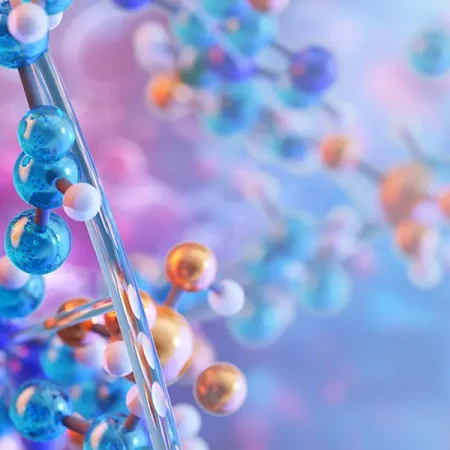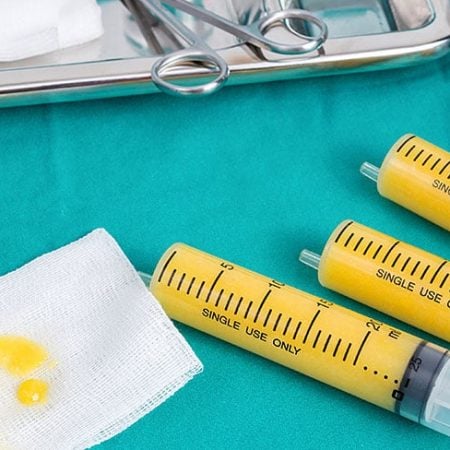What Is Stem Cell Therapy?
Stem cell therapy is a form of regenerative medicine that uses the body’s own cells to repair or replace damaged tissues and organs. Stem cells are undifferentiated, meaning they have the potential to become a variety of specialized cell types. When introduced into a targeted area, stem cells may stimulate healing, reduce inflammation, and in some cases, regenerate tissue.
How Stem Cells Work
Stem cells are introduced via injection or infusion into the area needing repair. Once administered, they interact with the body’s immune system and local cells, triggering regenerative processes.
What Are the Types of Stem Cell Therapy?
There are several sources of stem cells used in treatment, each with specific applications and limitations.
Mesenchymal Stem Cells (MSCs)
Derived from bone marrow, adipose tissue, or umbilical cord tissue. Commonly used in orthopedic and anti-inflammatory applications.
Hematopoietic Stem Cells (HSCs)
Typically sourced from bone marrow or blood. These are used in FDA-approved treatments such as bone marrow transplants for leukemia.
Induced Pluripotent Stem Cells (iPSCs)
Genetically reprogrammed adult cells that mimic embryonic stem cells. Not yet widely used in clinical settings due to safety concerns.
What Are Adipose-Derived Stem Cells?
Adipose-derived stem cells (ADSCs) are harvested from fat tissue via liposuction. These cells are abundant and easy to collect, making them a practical source for regenerative therapy.
Common Uses for ADSCs
- Joint pain and arthritis
- Skin rejuvenation
- Sexual wellness
- Soft tissue repair
Because they are rich in mesenchymal stem cells, ADSCs are frequently used in aesthetic and orthopedic applications.
What Are the Approved Stem Cell Therapies?
As of now, the FDA has only approved a limited number of stem cell therapies, mainly for blood-related conditions.
FDA-Approved Indications
- Bone marrow transplants for leukemia and lymphoma
- Some immune disorders and metabolic diseases
Experimental stem cell treatments are available, but they are not FDA-approved and are often offered under investigational or off-label frameworks.

Why Is Stem Cell Treatment Not Widely Available?
Stem cell therapies are tightly regulated due to safety concerns, inconsistent outcomes, and limited clinical data. Most procedures outside of hematological treatments are still considered investigational.
Barriers to Availability
- Lack of large-scale clinical trials
- High cost of research and production
- Ethical and legal concerns regarding certain cell sources
This landscape has led to a global patchwork of regulatory policies and treatment availability.
Is Stem Cell Therapy Available in the USA?
Yes, but access is limited. The U.S. permits some stem cell therapies under strict regulatory oversight, mostly within academic or clinical trial settings.
Where It’s Offered
- Specialized clinics offering adipose or bone marrow-derived treatments under physician discretion
- University medical centers participating in FDA-approved trials
- Offshore clinics for unapproved procedures
Patients seeking regenerative therapies often travel internationally due to restrictive domestic policies.
Stem Cell Treatment Cost: What to Expect
Stem cell therapy is rarely covered by insurance unless it falls under an FDA-approved indication.
Price Range by Treatment Type
- Orthopedic or aesthetic applications: $5,000–$15,000 per session
- Systemic regenerative protocols: $15,000–$50,000
- Offshore stem cell treatment: $10,000–$60,000 depending on location and method
Cost Variables
- Cell source (adipose, marrow, umbilical)
- Number of injections or infusions
- Lab processing and storage fees
Patients should be wary of unregulated clinics promising cures and offering low-cost procedures.
Is Stem Cell Therapy Available in the USA?
Regenerative stem cell therapy continues to gain traction in research for its potential to repair, rather than replace, damaged tissues.
Emerging Applications
- Neurological diseases (e.g., Parkinson’s, MS)
- Heart failure and vascular repair
- Autoimmune conditions
- Spinal cord injuries
While clinical adoption remains cautious, advances in stem cell science are moving toward safer, more targeted interventions with increasing regulatory clarity.








